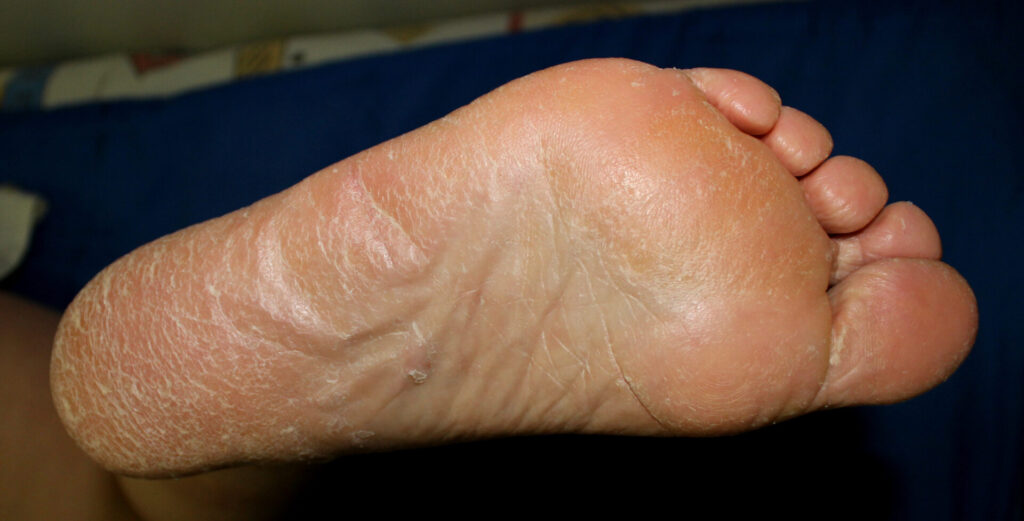What is Keratoderma Climactericum? Learn more about this condition
Keratoderma climactericum another term is Haxthausen disease. Keratoderma climactericum refers to the form that occurs during the menopausal period. There are many forms of keratoderma which is the term given to the development of harmless skin thickening on the soles, particularly the heels.
Acquired keratoderma is a palmoplantar keratoderma that is NOT inherited as a primary genetic condition. It may occur as part of a generalised skin condition (some of which may be inherited) or as a result of another illness.
Causes of Keratoderma Climactericum
Keratoderma climactericum occurs more commonly in women of menopausal age with no personal or family history of skin diseases.
Hormonal imbalance may play a role as well as obesity, hypertension, cold dry climates and wearing backless shoes, e.g. sandals.
Symptoms of Keratoderma Climactericum
Skin thickening (hyperkeratosis) and also redness (erythema) begin over pressure points on the heels and forefeet. As the hyperkeratosis extends, cracks (fissures) form that make walking painful. Itching is usually minimal.
If present, involvement of the palms is much milder and more discrete.
Treatment
- Avoid and correct aggravating factors, for example, avoid wearing sandals, lose weight and use thick moisturisers regularly.
- Topical estradiol 0.05% ointment or preparations containing 25–40% urea or other keratolytics may be useful.
- A low-dose oral vitamin A (retinoid) treatment in severe cases.
The condition is diagnosed based on its appearance, where it is distinguished from other conditions such as contact dermatitis, psoriasis and tinea.
Are you suffering from this condition? One of our podiatrist can assist and then recommend what treatment options are best to get you back on track. ✅
Schedule an appointment here or you may call us at 44 (0) 207 101 4000. 📞
We hope you have a feetastic day! 👣☀️
-The Chelsea Clinic and Team
Check our latest blog about Reactive Arthritis here https://www.thechelseaclinic.uk/reactive-arthritis/
Check out our blog about Cracked Heels here https://www.thechelseaclinic.uk/cracked-heels/
Read our blog about Nail Psoriasis here https://www.thechelseaclinic.uk/nail-psoriasis-⚡️💥⚠️/




